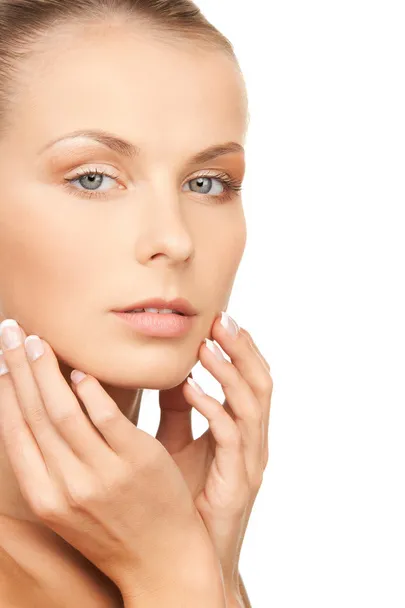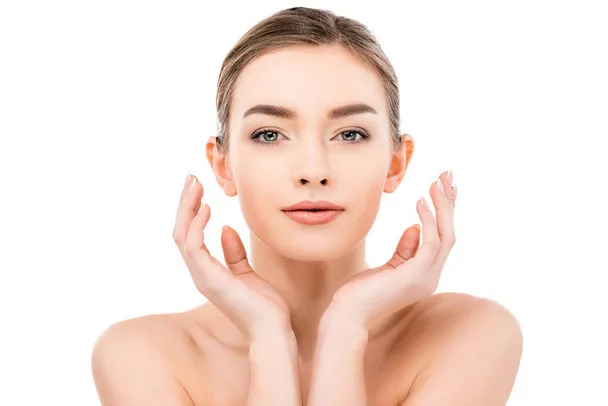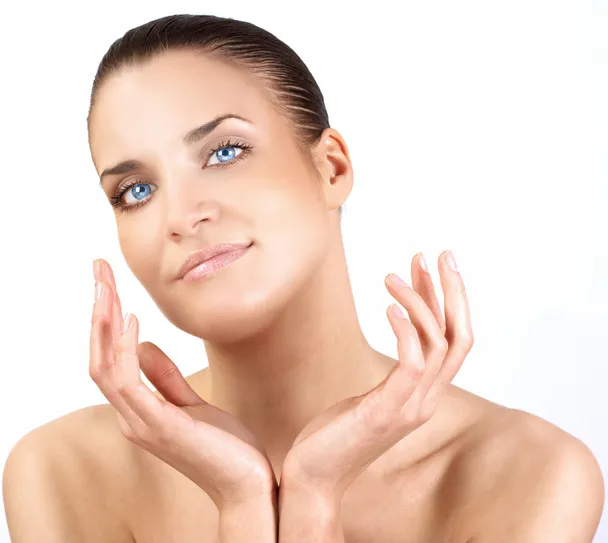Understanding Sallow Skin: Causes, Symptoms, and Treatment Options Explained by Our Dermatologist
Sallow skin, characterized by a yellowish or dull complexion, is a common concern that can affect individuals of all ages and skin types. While sallow skin is often associated with aging, various factors can contribute to its development. In this article, our dermatologist will delve into the causes, symptoms, and treatment options for sallow skin, offering valuable insights to help you achieve a brighter, more radiant complexion.
What is Sallow Skin? Sallow skin is a common dermatological condition characterized by a complexion that lacks its natural vibrancy, presenting instead with a yellowish or dull appearance. This discoloration can occur across various areas of the face and body, imparting an overall tired or unhealthy look to the skin. One of the hallmark features of sallow skin is the noticeable loss of radiance, which is often attributed to factors such as dehydration, poor diet, sun damage, or underlying health issues. Individuals with sallow skin may also experience other associated symptoms, including an uneven skin tone, dark circles under the eyes, or a general sense of fatigue. These manifestations collectively contribute to the perception of sallow skin as a cosmetic concern that can impact one’s self-esteem and overall well-being. Addressing sallow skin typically involves a combination of lifestyle modifications, skincare interventions, and, in some cases, medical treatments to restore the skin’s natural vitality and luminosity.
Causes of Sallow Skin: Several factors can contribute to the development of sallow skin, including:
- Poor Diet: A diet lacking in essential nutrients, such as vitamins and antioxidants, can significantly impact the health and appearance of the skin, leading to the development of sallow skin. Essential nutrients play a crucial role in maintaining the skin’s health and vitality, contributing to its radiance and overall complexion. When the body lacks adequate vitamins and antioxidants, the skin may not receive the necessary nourishment it needs to function optimally. This can result in a dull complexion characterized by a lack of brightness and vitality. Nutrient deficiencies can also impair the skin’s ability to repair and regenerate, further exacerbating the appearance of sallow skin. Therefore, adopting a balanced diet rich in fruits, vegetables, lean proteins, and healthy fats is essential for promoting skin health and preventing sallow skin. Incorporating foods high in vitamins A, C, and E, as well as antioxidants like beta-carotene and lycopene, can help nourish the skin from within, leading to a more radiant and luminous complexion.
- Sun Damage: Excessive sun exposure is a leading cause of sallow skin, as it can cause significant damage to the skin’s structure and appearance. UV radiation from the sun penetrates the skin’s layers, leading to various detrimental effects, including pigmentation irregularities and a dull, sallow complexion. Prolonged sun exposure accelerates the aging process, causing the breakdown of collagen and elastin fibers in the skin. This results in a loss of firmness and elasticity, contributing to the development of sallow skin. Additionally, sun damage can lead to the formation of sunspots, uneven skin tone, and an overall lack of radiance. To prevent sallow skin caused by sun damage, it is crucial to practice sun protection measures such as wearing sunscreen daily, seeking shade during peak sun hours, and wearing protective clothing and accessories like hats and sunglasses. By protecting the skin from harmful UV rays, individuals can maintain a healthier, more youthful complexion and prevent the development of sallow skin.
- Smoking: Smoking is a significant contributor to sallow skin, as it adversely affects the skin’s health and appearance in multiple ways. One of the primary mechanisms by which smoking contributes to sallow skin is through its vasoconstrictive effects on blood vessels. Smoking causes constriction of the blood vessels in the skin, reducing blood flow and oxygen delivery to the tissues. This impairs the skin’s ability to receive essential nutrients and oxygen, resulting in a dull, sallow complexion. Furthermore, smoking promotes the production of free radicals in the body, which are highly reactive molecules that can damage the skin’s structure and accelerate the aging process. Over time, smoking can lead to the formation of fine lines, wrinkles, and a loss of elasticity, further contributing to the appearance of sallow skin. To prevent sallow skin caused by smoking, quitting smoking is essential. By quitting smoking, individuals can improve blood flow and oxygen delivery to the skin, reduce oxidative stress, and promote a healthier, more vibrant complexion.
- Dehydration: Inadequate hydration is a common culprit behind sallow skin, as it can leave the skin looking dull, tired, and lackluster. The skin requires adequate hydration to maintain its health and vitality, and when it becomes dehydrated, its appearance can suffer. Dehydrated skin is more prone to fine lines, wrinkles, and a sallow complexion due to a lack of moisture and plumpness. Additionally, dehydration can impair the skin’s natural barrier function, leading to increased sensitivity and susceptibility to environmental damage. Factors such as excessive sweating, dry air, and insufficient water intake can contribute to dehydration and exacerbate the appearance of sallow skin. To combat sallow skin caused by dehydration, it is essential to prioritize hydration both internally and externally. Drinking plenty of water throughout the day helps replenish lost fluids and keep the skin hydrated from within. Additionally, using moisturizers and hydrating skincare products can help lock in moisture and improve the skin’s texture and appearance. Incorporating ingredients like hyaluronic acid and glycerin can help attract and retain moisture in the skin, promoting a more radiant and healthy complexion.
- Aging: As we age, the skin’s natural renewal process slows down, leading to the accumulation of dead skin cells on the surface. This buildup of dead skin cells can contribute to a dull, sallow complexion, as it interferes with light reflection and diminishes the skin’s natural radiance. Additionally, aging leads to a decline in collagen and elastin production, which are essential proteins responsible for maintaining the skin’s firmness and elasticity. As a result, the skin becomes thinner, more fragile, and prone to sagging and wrinkles, further contributing to the appearance of sallow skin. Hormonal changes associated with aging, such as decreased estrogen levels in women, can also affect the skin’s appearance and contribute to sallow skin. To address sallow skin caused by aging, it is essential to adopt a comprehensive skincare routine that focuses on promoting collagen production, improving skin texture, and restoring luminosity. This may involve using anti-aging skincare products containing ingredients like retinoids, peptides, and growth factors, which help stimulate collagen synthesis and improve skin tone and texture. Additionally, incorporating exfoliating treatments into your skincare routine can help remove dead skin cells and promote cell turnover, leading to a brighter, more youthful complexion. Regular exercise, adequate sleep, and a healthy lifestyle can also help minimize the effects of aging on the skin and promote a more radiant appearance overall.
Symptoms of Sallow Skin: The primary symptom of sallow skin is a yellowish or dull complexion. Other common symptoms may include:
- Uneven skin tone
- Dark circles under the eyes
- Fatigue or tired appearance
- Loss of radiance and glow
Treatment Options for Sallow Skin: Fortunately, several treatment options are available to improve sallow skin and restore a brighter, more radiant complexion. These include:
- Sun Protection: Protecting the skin from harmful UV radiation is paramount for preventing sallow skin and premature aging. Exposure to UV rays can lead to sunburn, pigmentation irregularities, and a dull, lackluster complexion. To shield your skin from UV damage, it is crucial to apply a broad-spectrum sunscreen with an SPF of 30 or higher daily, even on cloudy days. Choose a sunscreen that offers protection against both UVA and UVB rays, and reapply it every two hours, especially when spending extended periods outdoors. In addition to sunscreen, wearing protective clothing, such as wide-brimmed hats and sunglasses, and seeking shade during peak sun hours can further minimize UV exposure and preserve the skin’s health and vitality.
- Hydration: Maintaining adequate hydration is essential for keeping the skin plump, hydrated, and radiant. Dehydrated skin is more prone to dryness, dullness, and a sallow complexion, as it lacks the moisture necessary for optimal function. Drinking plenty of water throughout the day helps replenish lost fluids and supports the skin’s natural hydration mechanisms. Aim to drink at least eight glasses of water per day, and consider incorporating hydrating foods like watermelon, cucumbers, and oranges into your diet. Additionally, using moisturizers and hydrating skincare products can help lock in moisture and improve the skin’s texture and appearance, promoting a healthy, glowing complexion from the inside out.
- Skincare Products: Choosing the right skincare products can make a significant difference in improving sallow skin and enhancing overall complexion. Look for products containing ingredients like vitamin C, retinol, and hyaluronic acid, which are known for their brightening and anti-aging properties. Vitamin C helps brighten the complexion and reduce hyperpigmentation, while retinol stimulates collagen production and improves skin texture. Hyaluronic acid attracts and retains moisture in the skin, keeping it hydrated and plump. Additionally, incorporating exfoliating treatments into your skincare routine can help remove dead skin cells and promote cell turnover, leading to a more radiant complexion. Choose gentle exfoliants that won’t irritate the skin, and use them regularly to reveal smoother, more luminous skin.
- Professional Treatments: For more intensive treatment of sallow skin, consider professional skincare treatments performed by trained professionals. Chemical peels, microdermabrasion, and laser therapy are popular options for improving skin tone and texture and enhancing overall complexion. Chemical peels use exfoliating agents to remove the outer layer of dead skin cells, revealing fresh, new skin underneath. Microdermabrasion involves exfoliating the skin with tiny crystals to improve its texture and tone. Laser therapy targets specific skin concerns such as pigmentation irregularities and stimulates collagen production for a more youthful appearance. These professional treatments can help address sallow skin and provide noticeable results, but they may require multiple sessions for optimal outcomes. Consult with a dermatologist or skincare specialist to determine the most suitable treatment plan for your skin type and concerns.
Healthy Diet: Incorporating a balanced diet rich in a variety of nutrients is essential for maintaining healthy skin and preventing sallow complexion. Fruits, vegetables, and lean proteins provide the body with essential vitamins, minerals, and antioxidants that support skin health. Foods high in antioxidants, such as berries, citrus fruits, and leafy greens, play a crucial role in protecting the skin from oxidative damage caused by free radicals. These antioxidants help neutralize harmful molecules, preventing them from damaging the skin’s cells and promoting a more radiant complexion. Additionally, a diet rich in omega-3 fatty acids found in fish, nuts, and seeds can help maintain the skin’s lipid barrier, keeping it hydrated and supple. By prioritizing nutrient-dense foods in your diet, you can nourish your skin from within and maintain a healthy, glowing complexion.
Conclusion:
Sallow skin is a common concern that can affect individuals of all ages and skin types. While various factors can contribute to its development, there are several treatment options available to improve sallow skin and restore a brighter, more radiant complexion. By incorporating healthy lifestyle habits, skincare products, and professional treatments, you can effectively address sallow skin and achieve healthier, more vibrant-looking skin. Consult with a dermatologist to develop a personalized treatment plan tailored to your specific needs and concerns, and take proactive steps to enhance your skin’s health and vitality.









